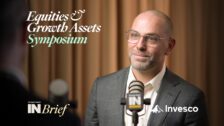Green bonds enter mainstream amid pandemic
According to think-tank Climate Bonds Initiative, green bonds were created to fund projects that have positive environmental or climate-related benefits. They typically fall into the basket of “use of proceeds” bonds where the capital raised is earmarked for green projects, but remain secured by the issuer’s entire balance sheet.
Calvert Research & Management, an Eaton Vance company, and a global leader in the space, offered an update on the key events for the sector in 2020. According to Calvert, green bond issuance was overtaken by social and sustainability bonds in 2020 as “governments and corporates sought to combat the effects of the pandemic” in the most efficient manner possible.
Despite this switch in 2020, global green bond issuance hit US$233 billion ($306.6 billion) in 2020, falling just shy of the record US$255 billion in 2019. In fact, ING has reported that the third quarter of 2020 was the biggest in history for this kind if issuance, as companies turned to the future ahead of vaccine news. According to Brian Ellis, fixed income portfolio manager at Eaton Vance, this trend is set to continue as “global demand grows for debt that supports environmental and other sustainability-focused projects.”
The key driver of this trend, of course, is the growing demand for transparency from direct investors and members of large pension funds alike. Following a number of high-profile court cases in which members sued their super funds for a perceived lack of action on climate change, asset owners are being forced to move beyond ESG tags into real action. There appears no better time than the present, with ING reporting that cumulative issuance of green bonds now exceeds US$1 trillion ($1.3 trillion).
Issuance is set to grow further in the coming months after the EU announced it will sell EUR225 billion ($403 billion) in green bonds as part of its “pandemic recovery fund.” representing around 30 per cent of the total rescue package. According to Ellis, “state-level and other international support for the green market is expected to grow further in the coming months, with the UK, Canada, Spain — and potentially up to 11 other sovereigns — set to issue inaugural green bonds in 2021.”
What are green bonds and how do they differ from normal bonds?
Very little, in reality. In general green bonds are secured by the same assets as traditional bonds, are therefore priced similarly, and have the same rights as other bondholders. To be classified as “green” by the CBI, 100 per cent of a bond’s net proceeds must be dedicated to financing or refinancing “green” assets, including renewable energy, low-carbon transport, low-carbon buildings, sustainable water and waste management, sustainable land use and climate-change adaptation measures such as flood defences.
Bonds are traditionally separated into the following categories, upon which fund managers are required to report:
- Use of proceeds bond – proceeds are earmarked for green projects
- Use of proceeds revenue bond – earmarked for or refinancing green projects
- Project bond – ring-fenced for specific green projects
- Securitisation bond – refinance portfolios of green projects
- Covered bond – earmarked for eligible projects in the covered pool
With investors demanding greater transparency and seeking to ‘do good’ rather than rely on ESG labels, advisers had best get their head around this growing sector now.










